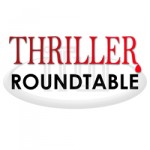

August 19 – 25: “How do you separate yourself from the characters you write?”
 The questions keep coming this summer! This week ITW members Andy Wolfendon, Lynn Chandler Willis, Ann Simas, Ronie Kendig and J. A. Walsh will answer the question: How do you separate yourself from the characters you write? Or do you? Scroll down to the “comments” section to follow along. You won’t want to miss this!
The questions keep coming this summer! This week ITW members Andy Wolfendon, Lynn Chandler Willis, Ann Simas, Ronie Kendig and J. A. Walsh will answer the question: How do you separate yourself from the characters you write? Or do you? Scroll down to the “comments” section to follow along. You won’t want to miss this!
 Award-winning author Lynn Chandler Willis was the first woman in a decade to win the Private Eye Writers of America’s Best 1st PI Novel with her Shamus-nominated book, Wink of an Eye. Her traditional mystery series featuring newspaper publisher and reporter Ava Logan kicked off with Tell Me No Lies. The series continues in June and July 2019 with Tell Me No Secrets and Tell Me You Love Me. Her first published novel, The Rising, won the Grace Award for Excellence in Faith-based Fiction. Her work usually features small towns with big characters. She lives in the heart of North Carolina with Finn, a rescue border collie, and hopes to one day retire to the Appalachian region she often writes about.
Award-winning author Lynn Chandler Willis was the first woman in a decade to win the Private Eye Writers of America’s Best 1st PI Novel with her Shamus-nominated book, Wink of an Eye. Her traditional mystery series featuring newspaper publisher and reporter Ava Logan kicked off with Tell Me No Lies. The series continues in June and July 2019 with Tell Me No Secrets and Tell Me You Love Me. Her first published novel, The Rising, won the Grace Award for Excellence in Faith-based Fiction. Her work usually features small towns with big characters. She lives in the heart of North Carolina with Finn, a rescue border collie, and hopes to one day retire to the Appalachian region she often writes about.
 J. A. Walsh worked in intelligence and counter-terrorism after the 9/11 attacks before embarking on a career advising the U.S. military on energy security strategies. He has degrees in Russian, English literature, and Environmental Law. He lives in North Carolina with his family.
J. A. Walsh worked in intelligence and counter-terrorism after the 9/11 attacks before embarking on a career advising the U.S. military on energy security strategies. He has degrees in Russian, English literature, and Environmental Law. He lives in North Carolina with his family.
 Andy Wolfendon is a ghostwriter of over sixty books for adults and children. His screenplays have been optioned numerous times in Hollywood. He has written/designed over twenty-five computer and video games, many of which have won major industry awards. His award-winning stage play Empties has had multiple productions. Andy has done scriptwriting work for Blizzard Entertainment, Disney, Titanium Comics, Viacom, and other entertainment companies. FISHERMEN’S COURT is his first novel.
Andy Wolfendon is a ghostwriter of over sixty books for adults and children. His screenplays have been optioned numerous times in Hollywood. He has written/designed over twenty-five computer and video games, many of which have won major industry awards. His award-winning stage play Empties has had multiple productions. Andy has done scriptwriting work for Blizzard Entertainment, Disney, Titanium Comics, Viacom, and other entertainment companies. FISHERMEN’S COURT is his first novel.
 Ann Simas lives in Oregon, but she is a Colorado girl at heart, having grown up in the Rocky Mountains. She has been an avid reader since childhood and penned her first fiction “book” in high school. She particularly likes to write mystery-thriller-suspense with a love story and paranormal or supernatural elements. She is the author of 27 novels, 1 short-story collection, and 1 novella. An award-winning watercolorist and a budding photographer, Ann enjoys needlework and gardening in her spare time. She is her family’s “genealogist” and has been blessed with the opportunity to conduct firsthand research in Italy for both her writing and her family tree. The genealogy research from decades old documents in Italian, she says, has been a supreme but gratifying challenge.
Ann Simas lives in Oregon, but she is a Colorado girl at heart, having grown up in the Rocky Mountains. She has been an avid reader since childhood and penned her first fiction “book” in high school. She particularly likes to write mystery-thriller-suspense with a love story and paranormal or supernatural elements. She is the author of 27 novels, 1 short-story collection, and 1 novella. An award-winning watercolorist and a budding photographer, Ann enjoys needlework and gardening in her spare time. She is her family’s “genealogist” and has been blessed with the opportunity to conduct firsthand research in Italy for both her writing and her family tree. The genealogy research from decades old documents in Italian, she says, has been a supreme but gratifying challenge.
 Ronie Kendig is an award-winning, bestselling author of over twenty titles. She grew up an army brat, and now she and her army-veteran husband live a short train ride from New York City with their children, VVolt N629 (retired military working dog) and Benning the stealth golden. Ronie’s degree in psychology has helped her pen novels of intense, raw characters.
Ronie Kendig is an award-winning, bestselling author of over twenty titles. She grew up an army brat, and now she and her army-veteran husband live a short train ride from New York City with their children, VVolt N629 (retired military working dog) and Benning the stealth golden. Ronie’s degree in psychology has helped her pen novels of intense, raw characters.
- LAST GIRL MISSING with K.L. Murphy - July 25, 2024
- CHILD OF DUST with Yigal Zur - July 25, 2024
- THE RAVENWOOD CONSPIRACY with Michael Siverling - July 19, 2024
